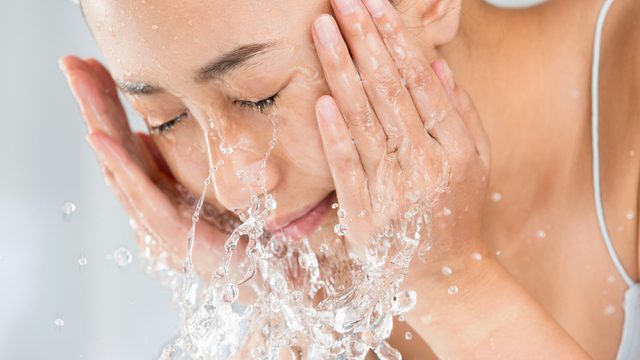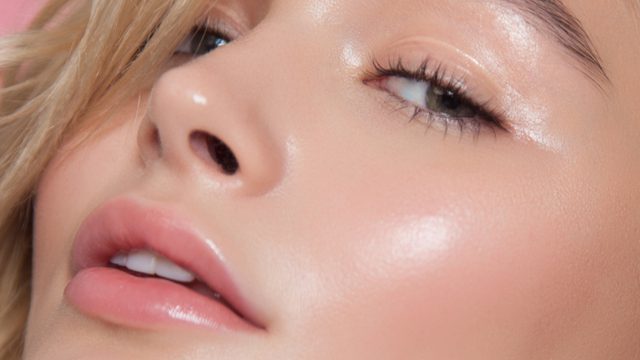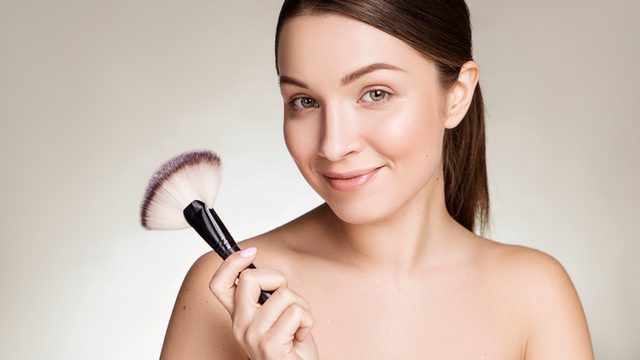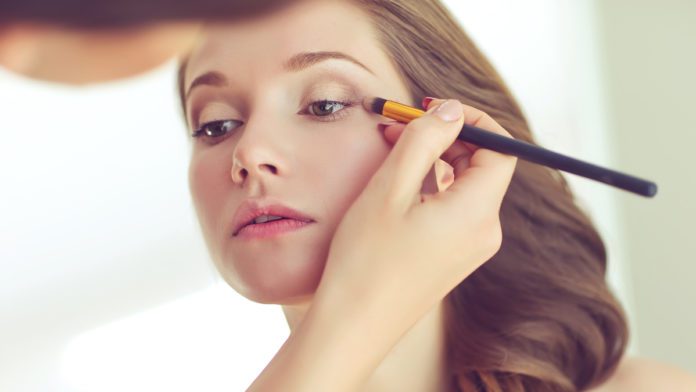Acne treatment can be a lot to handle, especially at its initial stages. While a lot of people want their acne to disappear as soon as possible, they seem to be torn between using their regular makeup products and treating their acne as efficiently as they can.
In fact, some people assume that you shouldn’t be able to use makeup when you’re applying and following makeup treatments on your face. They believe that one has to be dropped for the other.
However, the good news is that you can apply makeup to your face while treating your face of acne. You only need to ensure that one doesn’t disrupt the other, and you follow the appropriate steps. Here are the best tips you need to follow while applying makeup and treating acne-prone skin.
Prep and prime your skin before applying makeup

What you do before you apply your makeup is just as important as how you apply your makeup. It’s important to make sure that your face is ready to ‘receive’ makeup and not have an adverse effect on your current acne treatment.
First, wash your face thoroughly and pat dry before applying anything on it. Ensure that you don’t scrub your face or exfoliate it every single time you need to wash your face. Exfoliation wash should be somewhere between 3 and 4 times each week.
Then, moisturize your face with a water-based moisturizer. Moisturizers help to balance your acne treatments and keep water in your face. After the moisturizer sets in, you should apply a mattifying primer gel that minimizes blemishes and pores on your face. Again, use water-based primer gels that’ll reduce shine and absorb oil all for as long as you have makeup on.
Prepping and priming your face before using makeup helps to smoothen out your pores while prepping your face and to achieve a matte finish which is what you’ll need to complement your acne treatment. Also, ensure that you prep your skin and apply your makeup afterward under good light.
After priming your face, hold on for a couple of minutes before you begin to apply makeup.
Choose a matte finish over a dewy look

While dewy look may have been the rave of the summer, and still maintaining its front seat through the fall season, you may have to take a step when you’re applying acne treatment to your face.
People with acne-prone skin should be very considerate when picking out makeup products. You shouldn’t be quick to want to achieve a dewy look because your skin isn’t tolerant enough to contain a sparkly foundation. The pores of your skin should be the first thing you consider when trying to treat acne.
While treating your skin for acne, you should stay away from oil-based makeup products because your face needs to be far away from excess lubrication and all the extra shiny that come with those products. So when you have oily skin, you should be on the lookout for “oil-free” products, and “matte”, “semi-matte” descriptions on the packages, rather than those with “satin” or “dewy” finish.
Even if you were already using these oil-based products, immediately you start treating acne, you should make the switch because there’s a chance that these products are causing your acne.
Use makeup applicators

Applying makeup always involves our fingers, one way or the other. However, when treating acne, you need to use your fingers as minimally as possible. Instead of using your fingers, you should make use of makeup applicators instead.
Steer clear of applying your makeup with your fingers for a lot of reasons. First, they can transfer oil from your fingers to your face which is the last thing you need. Also, there’s a chance your fingers secret dirt or bacteria which can accelerate your acne breakout. Instead, you should use makeup applicators like brushes, sponges, and puffs to apply makeup directly to your skin.
However, ensure that your makeup applicators are clean and re-cleaned occasionally to avoid new acne breakouts because they usually collect product residue, dirt, oil, and bacteria.
Also, even though acne isn’t contagious, you shouldn’t share makeup applicators with others. This can cause sharing of bacteria, oil, dead skin cells, and similar acne-causing problems that can lead to fresh breakouts.
Remember that while applying makeup with these applicators, you should be gentle all through because excessive tugging can irritate your skin.
Utilize color correctors
One thing that a lot of people skip in their routine whenever they apply makeup is the use of color correctors.
Acne leaves our faces with a lot of red marks that are very evident and can stand out when we wear makeup too. So, instead of applying concealer straight up to your face, you should first use color correctors to cover them up. You can use green color correctors to fix your blemish before applying either your concealer or foundation. Color correctors help you to neutralize the color of your bright red zits and conceal the spots that your acne caused on your face.
Ensure that you apply the color corrector first before you apply any concealer or foundation on top.
Use lightweight and oil-free foundations and concealer

Remember that at this point, what you need makeup for is to balance your skin tone and not to necessarily cover up your makeup. Therefore, you need to pick foundations and concealers that are appropriate for your skin type.
First, you should pick ones that are both lightweight and oil-free. At this point you must have realized that your skin doesn’t require too much weight whenever you’re treating acne, so the chances of it resurfacing or breaking out will be low.
Then, you should also go with foundations and concealers that are your right color match. It can be tempting to pick a shade that’s either brighter or darker than your skin color, but you should know that that can attract unwanted attention to your acne.
Don’t try to cover up your acne with thick layers of foundation – not only will you worsen your acne situation, but you’ll not be able to cover it up at the end of the day. You require only thin layers of makeup to create a natural and concealed look. Again, use your makeup applicators to apply and achieve a natural look.
Make use of non-occlusive and oil-free acne products
The entire idea behind the products you use on your acne-prone skin is to ensure that they reduce and not multiply the effect of acne on your face. Therefore, even the products you use to treat your acne should be oil-free (if you didn’t know this already).
Any type of product that has ingredients that are not easily absorbed into your skin should be avoided. Products that are oil-based will rest on your skin and clog your pores, preventing your skin from absorbing and using them.
Therefore, ingredients such as paraffin wax, phthalates, isopropyl myristate, mineral oil, and petrolatum should be far away from your skin while treating acne. Or else, you’ll be prone to breakouts because of the pool of moisture they’ll create on the surface of your skin.
Occlusive products prevent sebum from leaving the skin when it should. Instead, it mixes with dead skin cells, becomes infected by bacteria, and creates inflammation in your skin which is what results in acne. Look out for products that are specially made for acne-prone skin. They’ll usually have terms like non-comedogenic, hyaluronic acid, and hypoallergenic on them.
Use zinc SPF
It’ll never be a bad idea to use SPF, even when you have acne on your skin. In fact, it’s the reason you should use sunscreen. Sunscreen doesn’t cause acne, neither do sunburns reduce the acne infection on your face. Although sunburns temporarily hide your acne, you don’t want to expose your skin to too much burning, or else you’ll get premature wrinkles and lines all over your skin.
Endeavor to always use sunscreen to protect your skin from the impact of the sun.
However, you want to ensure that the type of sunscreen you use is one that works for your skin type. You should use sunscreen that’s broad-spectrum and mineral-based. Ensure that the SPF is at least 30 and has a blocker like 6% of zinc oxide. Not only will this reduce the chances of inflammation, but they’ll also protect your skin from UVA and UVB light.
A water-based or light liquid-based gel or spray-on sunscreen is best for an acne-prone skin type. Other times, light lotions and powder sunscreens can also be used. The entire idea is to ensure that there’s a binder that’s not irritating to your skin.
Look out for “noncomedogenic” on the label of the sunscreen before purchasing them. Noncomedogenic products will not clog your pores.
ALWAYS remove makeup before bed
This is a step that shouldn’t be skipped or forgotten for any reason whatsoever. In fact, skipping this step can have more adverse ripple effects on your skin than any other thing. Never skip cleansing your skin before bedtime.
You should understand that using makeup ends with cleaning it off and prepping your skin for bedtime. No matter how gentle the product you apply on your skin, acne-prone skin (or any skin type in fact) is too sensitive to have products on when you’re going to bed.
Leave your skin clean, makeup-free, and moisturized so you can reduce breakouts and prevent them from reoccurring. This is the most important thing you can do for your skin when treating acne.
When taking off your makeup, use an oil-free makeup remover. Afterward, ensure that you wash your face with a gentle cleanser. Make sure you don’t scrub your face, even when removing makeup. If you need to apply your acne medication before bed, ensure that you apply it after cleansing, and then apply a non-comedogenic moisturizer afterwards.
Clean makeup applicators occasionally
It’s possible to overlook this, but it’s important to keep your makeup brushes clean at all times. To keep dirt, excess oil, and bacteria away from your face, you should clean your brushes, sponges, and puffs periodically and ensure that they’re properly cleaned.
You should ensure that your applicators are thoroughly cleaned every week, and avoid sharing them with others. Sharing makeup applicators will increase your breakout chances and intensify the ones that already exist. You can also get other contagious infections like sores from sharing makeup applicators.
Therefore, you should ensure that you only use clean applicators and you use them alone.
Let your face breathe!

While trying to make sure that we get rid of our acne or trying to cover them up as much as we can, we forget that little is more. We forget that the real treatment is in leaving the face to breathe and allowing anti-acne products to penetrate thoroughly into the skin.
Don’t use makeup at all times, instead leave out time to ensure that your face is makeup-free and your pores heal a little faster than they would with regular makeup on.
Yes, wear makeup when you need to, but for those when you can avoid it, you should. Ensure that when you wear makeup throughout the day, your skin is thoroughly cleansed and allowed to breathe through the night.
Follow your acne treatments religiously and give your face the space to heal. There’s little or nothing that clogged pores will do for your acne-prone skin. You can only begin to heal when it’s clean, clear, and clear.
Conclusion
Applying makeup to your face while treating acne can be a pretty tricky situation to handle. However, with the prescribed steps above, you should be able to navigate it and ensure that one doesn’t obstruct the other. With the abovementioned steps, you can apply makeup safely while undergoing acne treatment.


